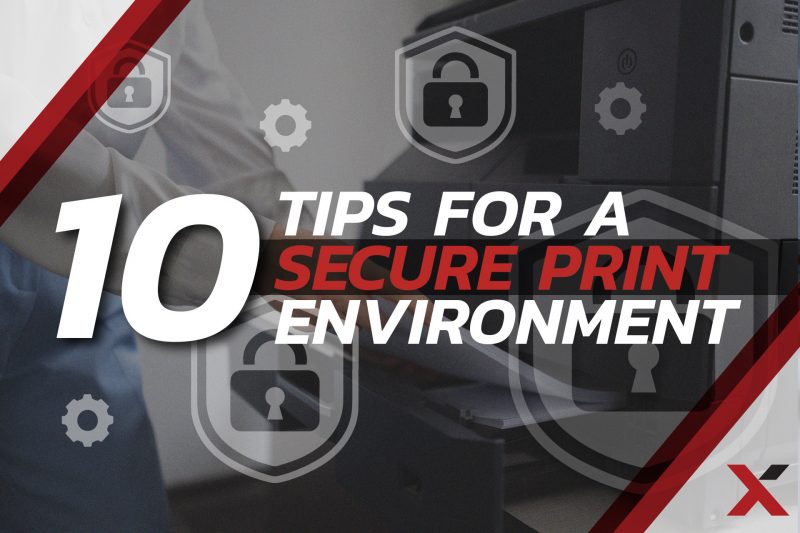How secure is your print operation? Can your business be breached through one of your printers? According to a recent study, nearly two-thirds of all businesses reported a data loss in the last year. Understandably, IT leaders are increasingly worried about print security. Here are some practical tips to help you establish and maintain a secure print environment in your organization.
1. Conduct Regular Security Assessments
Begin with a comprehensive evaluation of your existing print infrastructure to identify vulnerabilities and areas for improvement.
Regularly reassess and update your security measures to adapt to new threats. Continuous monitoring and periodic reviews are essential for maintaining a robust security posture.
2. Implement Strong User Authentication
Use multi-factor authentication (MFA) to ensure that only authorized personnel can access printing devices and sensitive documents. Combining something the user knows (PIN or password) with something the user has (smart card) or something the user is (biometric data) significantly enhances security.
3. Encrypt Data
Encrypting data both in transit and at rest is crucial for protecting sensitive information. Ensure that all data sent to and from printers is encrypted using strong encryption protocols like SSL/TLS. This prevents unauthorized access and ensures data integrity.
4. Use Secure Print Release Solutions
Implement secure print release solutions such as pull printing, which hold print jobs in a secure queue until the user authenticates their identity at the printer. This prevents sensitive documents from being left unattended and ensures they are only collected by authorized individuals.
5. Regularly Update Firmware and Software
Keep printer firmware and software up to date with the latest security patches. Regular updates are essential for closing security vulnerabilities and protecting devices from new threats.
6. Secure Network Integration
Place printers on separate network segments to limit their exposure to potential threats. Use firewalls and intrusion detection systems to protect the print environment from network-based attacks. Secure communication protocols such as SSL/TLS should be used for data transmission.
7. Monitor Print Activities and Maintain Audit Trails
Regularly monitor print activities to detect and respond to suspicious behavior. Maintain detailed audit logs that record who accessed what documents and when. This helps in forensic investigations and compliance reporting.
8. Harden Printer Devices
Harden printer devices by disabling unnecessary features and services, reducing the attack surface. Ensure that devices are configured to use the least privilege principle. Physical security measures, such as placing printers in secure locations and using physical locks, can prevent tampering and unauthorized access.
These practices are recommended by the National Institute of Standards and Technology (NIST)
9. Educate and Train Employees
Educate employees about the importance of print security and train them on best practices. Regular training sessions keep employees updated on the latest security threats and protocols.
10. Implement a Managed Print Services Solution
When it comes to cybersecurity, it’s natural for an IT team to focus on laptops and servers, while printing devices are not their go-to concern. As a result, printers are often left vulnerable, leaving the network exposed to a breach or cyberattack.
Rather than leaving your overworked internal IT team with the onus of securing all your printers, a better approach is to partner with a managed print services provider (MPS). Not only can we drastically reduce your print security exposure, we also often find hundreds of thousands of savings in operational spend by optimizing your device footprint, streamlining workflows and automating maintenance and replenishment cycles.
Reach out to us today!
Is it Time to Talk About Your Printer Security?
Request an assessment today to determine if your printer fleet is in need of upgrading. It’s a no-obligation conversation to determine the right solution for your company’s needs.
